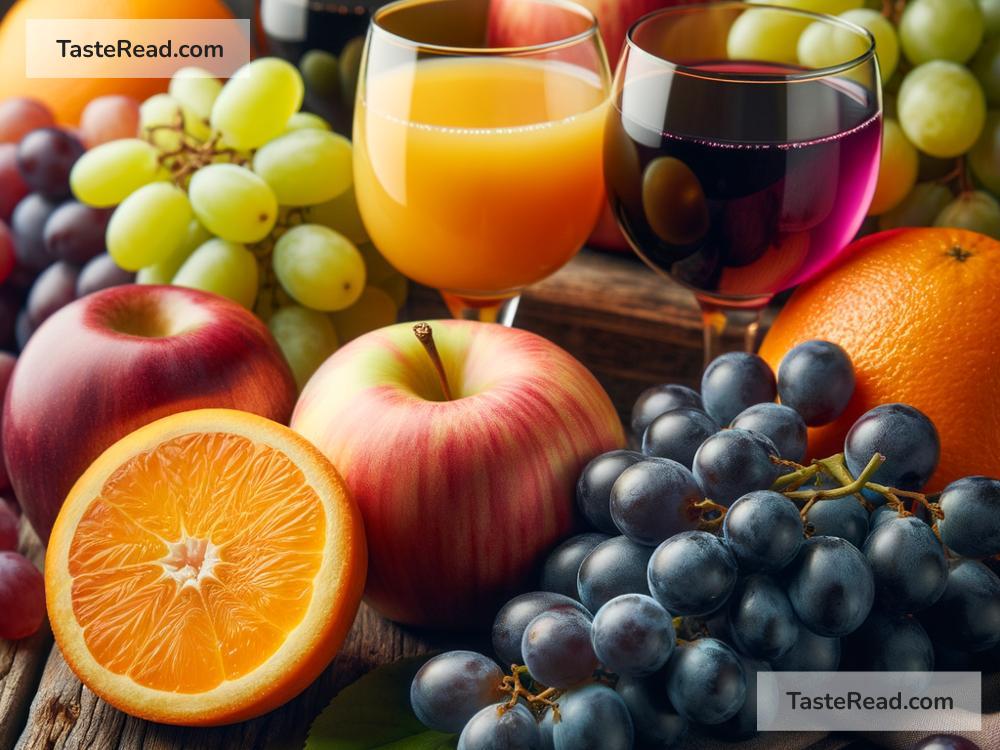How Fruit Juices Differ in Flavor from Fresh Fruits
We all love the taste of fresh fruits, whether it’s a crisp apple, a juicy orange, or a ripe mango. Fruits are nature’s candy, filled with sweetness, tartness, and bursts of flavor. But what happens when fruits are turned into juices? Many people assume that fruit juice tastes exactly like the fresh fruit it comes from. However, if you’ve ever compared the two, you may have noticed that the flavor of fruit juice can be surprisingly different.
In this blog post, we’ll explore why fruit juices differ in flavor from fresh fruits, breaking it down into simple points that everyone can understand.
Fresh Fruits: A Complete Package
Fresh fruits are nature’s perfect package. They contain juice, pulp, fiber, and sometimes even skin, seeds, or pits. All these parts work together to create the full flavor experience when you bite into a piece of fruit. Let’s use an example: when you eat an orange, you get the sweetness of the juice and the tartness of the pulp. At the same time, the tiny membranes that hold the juice add a different texture and depth to the taste.
When fruits are turned into juice, however, a lot of these components are often removed or altered. Juice is usually just the liquid part—and that’s part of what makes it taste different from the fresh fruit.
How Fruit Juices Are Made
To understand why juice tastes different, it’s helpful to know how most fruit juices are created. Fresh fruits are squeezed, blended, or pressed to extract their juice. The pulp, fiber, and other solids are often filtered out, leaving behind a smooth liquid. While the juice still contains the sugar, acid, vitamins, and water from the fruit, it loses many other elements that contribute to the overall flavor.
In some cases, fruit juices are further processed to enhance shelf life. For example:
– Pasteurization: Most store-bought juices are heated during pasteurization to kill bacteria and extend their shelf life. This process can slightly change the taste by altering the natural sugars and acids in the juice.
– Concentration: Some juices are turned into a concentrate by removing their water content and then rehydrated later. This can affect the flavor balance and make the juice taste slightly different from fresh fruit.
– Added Ingredients: Many commercially-made juices have added sugars, flavorings, or preservatives, which can make them taste sweeter, tangier, or less natural compared to the fruit itself.
The Role of Fiber
One major difference between fresh fruit and juice is fiber. Fresh fruits contain fiber, which not only supports digestion but also affects how the fruit’s sweetness is balanced. Fiber gives fruits a slightly chewy texture and slows down how quickly sugar is absorbed into your bloodstream, making the sweetness feel less intense.
With juice, the fiber is often removed, meaning all you’re left with is the liquid and sugar. This can make juice taste sweeter and less complex than fresh fruit. For example, when you drink a glass of apple juice, it can feel much sweeter than eating an apple because there’s no fiber to balance the flavor.
Freshness Matters
Another reason fruit juice tastes different is because it’s not “fresh” anymore. Fresh fruits are alive—their flavors change and develop over time based on how ripe they are. When you pick a fruit right at its peak ripeness, it’s bursting with natural flavor. However, when fruits are turned into juice, they lose some of their fresh qualities.
Even freshly squeezed juice changes quickly. Once the juice is exposed to air, the natural flavors can degrade. This is because oxygen interacts with the juice and causes oxidation, which can dull the vibrant taste of the fruit. Bottled juices, which are often stored for weeks or even months, are more likely to lose those fresh notes compared to whole fruit.
Texture and Mouthfeel
When you eat a piece of fruit, the texture plays a big role in your overall flavor experience. For instance, biting into a crisp apple or chewing on the juicy flesh of a peach adds layers of enjoyment. Juice, on the other hand, is all liquid, with no texture to enhance the flavor. Sometimes this makes juice feel less satisfying than eating the actual fruit.
Enhanced and Artificial Flavors
Lastly, some juices don’t taste like the fruit they’re made from because of added flavors. Many store-bought juices use artificial or “natural” flavorings to make them taste more appealing. These flavors can mimic fresh fruit but often come off as a little exaggerated or artificial. For example, “orange-flavored” juice might not taste exactly like biting into an orange because of the additives.
Conclusion
Fruit juices and fresh fruits both have their place in our diets. Fresh fruits offer a richer, more complex flavor because they contain fiber, pulp, and the natural elements that make them unique. Juices, on the other hand, are convenient and refreshing but often taste different due to processing, the removal of fiber, and added ingredients.
Understanding these differences can help us appreciate the distinct characteristics of each. Whether you choose a glass of juice or a piece of whole fruit, it’s always a great way to enjoy the delicious flavors nature has to offer!


